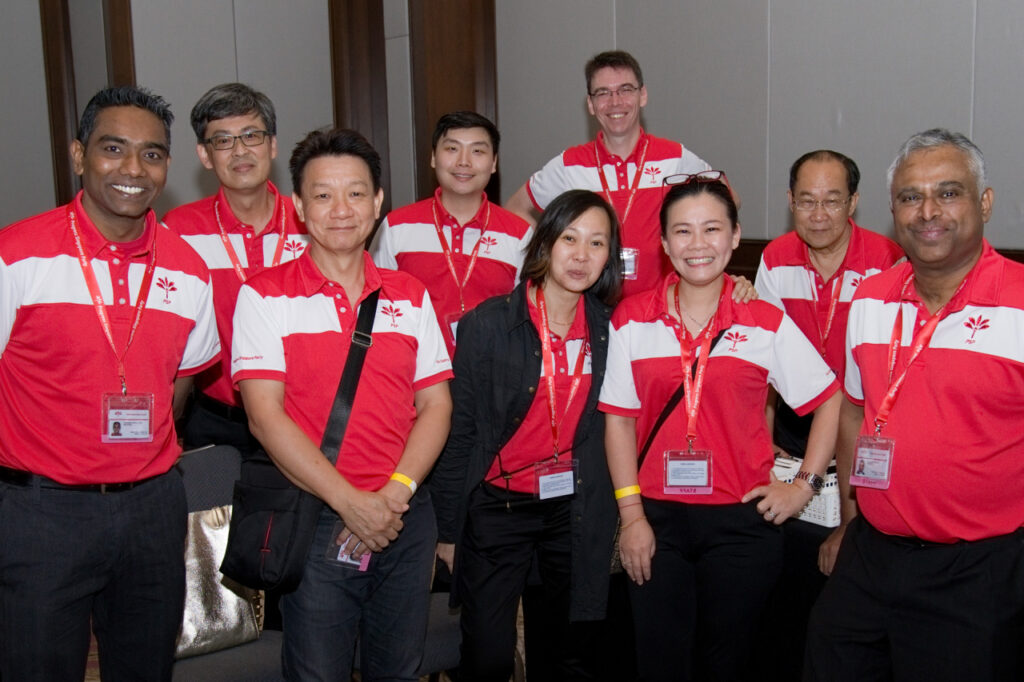Response to the National Broadcast by Senior Minister Teo Chee Hean on 11 June 2020.
By Dr Tan Meng Wah
In his National Broadcast, Senior Minister Teo Chee Hean made a convincing case in outlining Singapore’s success in fortifying external relationships. I have no qualm with that part of his speech. Indeed, Singapore’s able and agile Foreign Service has performed admirably to amply the influence of the city state despite it being just a little red dot “surrounded by bigger neighbours” and “exposed to external forces beyond our control”.
My disagreement with SM Teo’s message really began when he started talking about the need to build a more resilient Singapore based on three aspects: crisis response, economic resilience, and social resilience.
Singapore’s Shortfalls in Crisis Response
Take crisis response, for example. SM Teo highlighted the importance of having strong reserves to respond to unexpected crises. I would have thought that the first and foremost element of crisis response should have been the effectiveness of the multi-ministry taskforce (MTF), not the national reserves. For, had the MTF been more proactive and effective in pre-empting and adjusting to changing situations, the extended circuit breaker could very possibly have been avoided. As a result of MTF’s reactive stance and failure to adjust, the outbreak went out of hand and more reserves had been drawn down than otherwise needed. More importantly, because of the abrupt and massive economic disruptions caused by the extended circuit breaker, the survival of many SMEs is now at stake and so too are the jobs of Singaporeans employed by those SMEs.
In short, the crisis responses from the MTF fell short and it would not be an exaggeration to say that because of the mishandling of the outbreak, the livelihood of many business owners and workers have been put at risk.
Singapore Declining Economic Resilience
Next, about Singapore’s economic resilience. The truth is that, even before the outbreak of Covid-19 crisis, Singapore’s economic resilience has already been dented by the shift of emphasis in economic development over the last two decades from income generation to wealth generation to extract the rising land value.
Think about it, the most notable achievements of the Government since the turn of the century has been the completion of the Marina Bay Waterfront project and the two casinos during the first decade followed by the Jewel and the still work-in-progress Terminal 5 in the second decade. All these mega projects were taking place in addition to the relentless construction of private and public residential housing projects.
Looking ahead, in the third decade, the Government is set to embark on more mega projects, including the Jurong Lakeside District project and the Great Southern Waterfront, which covers a land area six times that of the Marina Bay Waterfront.
Hence, since the turn of the century, the tiny city-state has been in a construction spree sustainable today only by the importation of about 300,000 foreign construction workers.

Moreover, to extract rent, the Government also began promoting the real-estate investment trust (REIT) industry since 2003. Today, most of the malls, business parks, flatted factories, commercial buildings, warehouses, and distriparks are owned by a handful of REITs some of which are government-linked companies. In effect, a few highly organized landlords, protected by regulations and financed by the banks, now control the built-up spaces across the whole production value chain. By monopolizing the supply of built-up spaces, these REITs have been able to aggressively push up rentals to extract higher and higher yields. Over time, the rising tide pushes up all rentals in the market.
The cumulative impact of that across-the-board rise in rentals on living costs cannot be understated. Domestically, as businesses pass on the higher rentals to downstream links and eventually to consumers, living costs spike which in turn pushes up wage expectations. In the end, the spiral of rising rentals and wages reduce SMEs’ profitability and hence also their abilities to invest for the future.
Higher business costs also reduced the external competitiveness of MNCs and SMEs in the international markets. As they relocated to other locations with lower costs, higher value-add and higher productivity manufacturing jobs were lost. In place of it has been the creation of more and more low value-add labour intensive and lower productivity jobs in the services sectors that lead to the importation of even more low-cost foreign workers. Their willingness to work harder for less depresses wage growth of Singapore workers at lower rungs.
Meanwhile, economic restructuring to enable Singapore to exploit emerging opportunities afforded by the nascent 4th industrial revolution has basically stalled. The dwindling of meaningful job opportunities has also resulted in a shrinking middle class which, in any vibrant society, functions not only as a key driving economic engine but an agent of evolutionary change.
In short, the city-state may have become wealthier over the last two decades but the economy has become less flexible, vibrant and resilient because of Government’s rent-seeking policies.
Singapore’s Deteriorating Social Resilience
Finally, about Singapore social resilience. The Government recently claimed that, based on the 2019 Gini coefficient index, which measures relative inequality (in percentages), social inequality is today at its lowest over the past 18 years. The truth however is that inequality, measured in absolute term (i.e. in dollar value), is never higher. In fact, the gap between the top and the bottom rung wage-earners is still diverging at a significant rate of 19 times. I call that gap absolute inequality gradient gap.
On an annual basis, for example, the bottom-decile households’ annual wage went up by only $8,784 from 2003 to 2018 while the top-decile households saw an increase of $166,032 during the same period (see graph below). The figures exclude bonus and other non-monetary benefits, which if included, will only result in an even wider wage gap.
Households at the lower rungs are thus caught in a low-wage trap. It has been estimated that at least 20% of Singaporeans are in poverty today because of depressed wages. Gini coefficient has the tendency to understate the true extent of inequality because of its inherent weakness in measuring only relative but not absolute inequality. As long as the absolute inequality gradient gap is not narrowed, the dynamic is such that absolute inequality will continue to significantly widen even if Gini Coefficient shows otherwise.
Meanwhile, high housing costs attributed to the hidden high land costs and housing loan interests render households financially vulnerable.  Because of the high housing loans and mortgage payments, more homeowners have given up their public housing since the turn of the century. As a result, the number of households in rental flats has risen over the years. The Government has launched scheme in recent years to help some of these households became homeowners again but, as of February 2018, there are still 56,000 rental units for households who could not afford to own a flat.
Because of the high housing loans and mortgage payments, more homeowners have given up their public housing since the turn of the century. As a result, the number of households in rental flats has risen over the years. The Government has launched scheme in recent years to help some of these households became homeowners again but, as of February 2018, there are still 56,000 rental units for households who could not afford to own a flat.
Finally, the wealth transfer from the households to the state because of the high land costs hidden in BTO pricing also drains CPF savings meant for retirement. Perplexingly, despite having one of the highest GDP capita and savings rate in the world, Singaporeans worry about not having enough savings to fund their retirement. The unsavoury truth is that while State has become wealthier from the high land value extracted from public housing, the ‘wealth’ of the households is trapped in a consumption good misrepresented as an investment asset which not only generates no income but will also inevitably fall in value because of lease decay.
In short, household resilience has been dented directly by the Government’s rent-seeking policies that have resulted in depressed wage growth, high living costs, high housing costs and insufficient funds for retirement. Because of that, households have been less able to take care of themselves. A recent survey conducted by OCBC reveals that only 1 in 3 Singaporeans have enough savings to last more than 6 months if they lose their job now. But more importantly, the rising inequality also undermines social cohesion. A 2017 IPS survey shows that, in addition to race and religion, class divide is now becoming a new social faultline dividing the haves and haves not.
Domestic Weaknesses Cannot be Compensated by External Strengths
As said, I agree with SM Teo that the Foreign Service has been effective in fostering Singapore’s external strengths to deal with external challenges. But these external strengths cannot compensate for the domestic weaknesses arising from the rent-seeking economy.
For the greater good of societal development, it is the job of any government to keep rentierism in check. But if the rentier is the government, then who is to keep state rentierism in check?
The lower-rung households of Singapore today can be analogized to frogs in a pot of heated water. The Government has so much cold water now stashed away that, they can continue to add water to make conditions for the frogs bearable for a very long time to come even if they turn up the heat. This is amply demonstrated with the unprecedented drawdown of $52 billions from past reserves to tackle a crisis that essentially has been amplified by the MTF’s mishandling.
Throwing money at the problem, however, is hardly a long-term solution. The pain on the ground today is real and will not go away because forces generating that pain have become systemic and entrenched. Going forward, unless fundamental reforms are instituted, the pains will magnify as the rich become richer and the poor poorer.
In the game of musical chair, the music eventually has to stop. What then?
#progresswithcompassion
#youdeservebetter
#psp
Disclaimer:
The author of the above article writes in his own capacity with his views and opinion only to himself and are in no way a representation of the Party.

